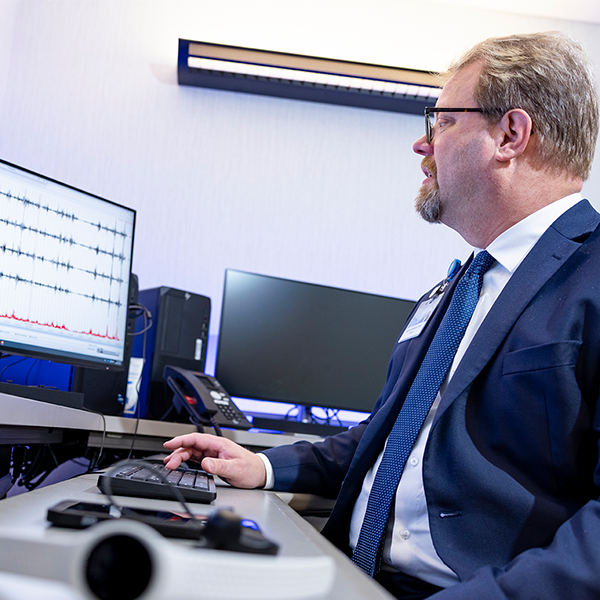-
Discovery Science
Science Saturday: Discovery of an ALS accomplice
Researchers studying amyotrophic lateral sclerosis, or ALS, have long been suspicious about the protein known as TDP-43. Now, in a new publication in Nature Neuroscience, Mayo researchers provide enough evidence to indict the protein as an ALS accomplice.
TDP-43 turns up in the brains of 97 percent of ALS patients. It's also found in other neurodegenerative diseases, including frontotemporal dementia, Alzheimer’s, and Huntington’s. In diseased cells, the protein shows up where it shouldn't be found, outside the nucleus. And not only mislocalized, but truncated and clumped with other proteins in the surrounding cytoplasm of the cell. But the protein’s actual role in neurodegeneration has remained a mystery.

Mayo Clinic neuroscientist Wilfried Rossoll, Ph.D., and his team set out to identify the proteins that exist within clumps, or aggregates, of TDP-43, a process he knew would be a challenge.
“The aggregates themselves are insoluble, so it’s hard to identify the component proteins,” he explains. Their plan was to use a method that identifies target proteins by examining the other proteins they associate with. While previously used with healthy cells, this method had not been tried on diseased cells, says Dr. Rossoll. Using this method, the authors determined that the aggregates interact with proteins that help transport substances between the cell's nucleus and cytoplasm.
The study – which includes findings from human cultures, as well as mouse and fruit fly models -- reports that pathological TDP-43 interferes with two specific types of proteins: Nucleoporins, the protein pores in the nuclear membrane, and proteins called nucleocytoplasmic transport proteins whose role is to shuttle other proteins and RNA in and out of the cell’s nucleus.
“It had been thought that pathological TDP-43 was the victim of a destructive process, but now our study shows once it’s mislocalized, it’s also perpetrator that drives further destruction,” he says.
Defects in nucleocytoplasmic transport proteins are known to occur in familial cases of ALS caused by the gene c9orf72, discovered only a few years ago by neurogeneticists at Mayo Clinic. But until now, these defects have never been shown to occur in sporadic cases of the disease, much less in the wide range of highly varied neurodegenerative diseases.
“Our study showed that nucleocytoplasmic transport defects are a hallmark of neurodegeneration across many different diseases,” Dr. Rossoll says. The research team underscored the importance of this process by “rescuing” diseased neurons, using a compound that prevents nucleocytoplasmic transport defects.
Overall, the study reveals a critical mechanism of neurodegeneration and provides a new target for possible treatments.
The other researchers from Mayo Clinic who participated in this study are:
Feilin Liu
Kevin B. Boylan, M.D.
Dennis W. Dickson, M.D.
Rosa Rademakers, Ph.D.
Yong-Jie Zhang, Ph.D.
Leonard Petrucelli, Ph.D.
Collaborators on the research are Emory University School of Medicine, University of Arizona, Barrow Neurological Institute, and Washington University.







